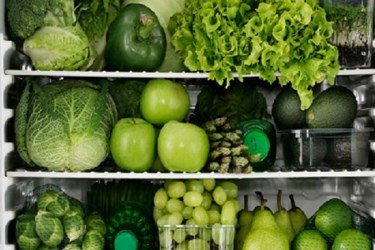Increasing Access To Cold-Chain Technology Will Decrease Food Waste
By Melissa Lind, contributing writer

As much as 40 percent of the world’s fresh food is lost each year with a lack of access to cold-chain storage and transport as the number one reason for the waste. Thus far, industry and governmental agencies have not done enough to address the issue and the world’s demand for fresh foods is only increasing.
India is a prime example of a lack of cold storage and transport with an estimated annual loss of $4.4 billion in fresh food and crops. India is the largest worldwide grower of bananas, but due to a poor infrastructure, the country supplies under 1 percent of the global banana market. Less than 4 percent of India’s produce is transported by cold chain, in comparison to developed countries, such as the UK, where 90 percent of fresh food and crops experience cold-chain transport and storage.
The world’s population is expected to exceed 9 billion by 2030, with over 3 billion of those people being considered “middle class.” As consumers increase in affluence, so does their demand for increasingly-rich diets. An increasing population, combined with the desires of the modern consumer, means fresh foods and globally-sourced products are in higher demand.
Despite the increased demand, many smallholder farmers remain locked in poverty. Without access to cold-chain storage and transport, access to the global markets is prohibited. At least 25 percent of current food loss could be eliminated by the use of environmentally-controlled transportation. Unfortunately, this requires clean technology which employs renewable energy. Most of the transportation and storage solutions currently offered use of fossil-fuel technology, which is not accessible in underdeveloped regions. Consequently, in addition to a lack of storage units, limited fossil-fuel based energy supplies bar producers in less-developed regions from effective transport of crops, even if cold-chain depots exist.
There has not been enough corporate support with investment in necessary technology. In fact, there may be some monetary disadvantage to increased efficiency as the current market environment supports a high demand for fertilizers and other agricultural developments to make certain crops more productive. Solutions that rely on solar power, or other clean-energy solutions, are in greater demand as governmental red tape bars some companies willing to spend money on capital investments with regulations that delay or prevent large scale projects such as those dependent upon fossil fuel.
Microfinancing, farming cooperatives, and small-scale technology developers may be making a dent in the problem for local producers, but education of small farmers is also a blocking point. Food producers in underdeveloped regions need to understand why they should change the way they are doing things, why they need new technology, and understand the need for new processes.
In order to meet future food supply needs, the cold chain’s capacity will need to increase in areas such as India, where with a growing population, the country’s refrigerated transportation will need to grow 100 fold. Without massive changes, many of the newly affluent will go without.
